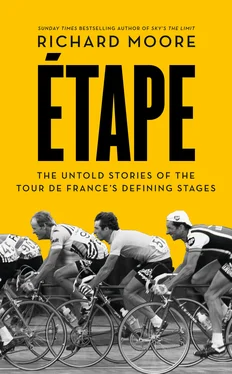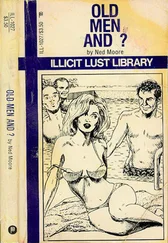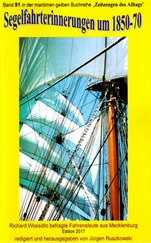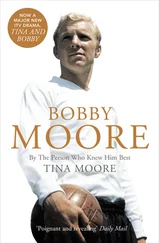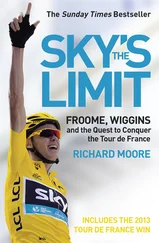1 July 1980. Stage Five: Liège to Lille
236.5km. Flat, cobbles
The French call it pavé . It sounds exotic and benign – it could be a succulent cut of beef – but for cyclists it has a different meaning. It is the pavé that defines Paris–Roubaix, the ‘Hell of the North’ one-day classic that includes twenty-odd sections of cobbles, or pavé ; hell because these cobbles are not the small stones polished by thousands of cars in a city, but large, uneven boulders planted in mud, arranged to run in narrow strips across the plains and fields of northern France and Belgium.
They are roads, but rarely used as such these days and hardly worthy of the name. Some are maintained purely for the purpose of meting out punishment once a year, around Easter time, to the cyclists of Paris–Roubaix.
Every decade or so, the pavé features not only in Paris–Roubaix but also in the Tour de France. In 2004 it was the pavé that destroyed the hopes of the Basque climber, Iban Mayo. In 2010 it did the same to another stick-thin climber, Fränk Schleck. On that occasion, even Lance Armstrong, who had capitalised on Mayo’s misfortune six years earlier, was a diminished figure, caught behind the carnage and reduced to chasing shadows, or younger, faster versions of himself, over the bone-jarring stones. ‘Sometimes you’re the hammer and sometimes you’re the nail,’ said Armstrong after the stage. ‘Today, I was the nail.’
Paris–Roubaix lends itself to great suffering and great quotes. Arguably the best is Theo de Rooy’s following the 1985 race, when he crashed, withdrew, and vented: ‘It’s bollocks, this race. You’re working like an animal, you don’t have time to piss, you wet your pants; you’re riding in mud like this, you’re slipping. It’s a piece of shit …’
‘Will you ride it again?’ asked the reporter.
‘Of course. It’s the most beautiful race in the world.’
It’s dangerous, the pavé . In 1998 Johan Museeuw fell in the Arenberg forest section during Paris–Roubaix and nearly lost his leg; in 2001 Philippe Gaumont broke his femur; in 2010 Fränk Schleck broke his collarbone. The weather matters. On dry days the dust kicked up by the bikes and vehicles fills lungs and leaves riders coughing for days. But when the rain falls, the challenge and danger are of a different order. A very different order indeed.
On 1 July 1980, it poured. It was a grey, bleak day as the Tour prepared to leave the industrial Belgian city of Liège, to head west to Lille. Five days earlier, the Tour had started in Frankfurt, then dipped into France, to Metz, before crossing another border to Belgium. Bad weather dominated those early stages. But the fifth stage, to Lille, looked set to be the worst of the lot. The rain was unrelenting. The wind blew hard across the northern European plains. ‘Thousands were by the roadside, sheltering under trees or huddled by their cars,’ as one report put it. ‘If stages two and three were purgatory, then stage five was hell.’
* * *
Few Tours have started with a bigger favourite than Bernard Hinault in 1980. Le Blaireau (The Badger) had won the previous two, including 1978, his début. That year, although only twenty-three, he rode with such impressive authority, even leading a riders’ protest at the end of one stage, that an aura was already starting to develop. The timing was right. In the same year that the great Eddy Merckx retired, a new patron was needed, and here was Hinault, waiting in the wings, poised to stride confidently to centre stage.
He didn’t have to wait long. A year after his first Tour and first win, Hinault returned and dominated. To underline his superiority, he even claimed the traditional sprinters’ finish on the Champs-Élysées. To win there, in the yellow jersey, showed more than strength and speed. It showed panache and defiance. It was a two-fingered salute. And it was completely unnecessary. Hinault entered Paris with a lead of three minutes over the second-placed Joop Zoetemelk (which in the record books is thirteen, after Zoetemelk was subsequently docked ten minutes for a doping offence). His win in Paris was Hinault’s seventh stage of the 1979 Tour. He was at the zenith of his powers.
There was, from the beginning, more to Hinault than physical ability. Sean Kelly, the Irishman who emerged in the late 1970s as one of the best sprinters and one-day riders, is not given to exaggeration or hyperbole. Ask him about Hinault, however, and his admiration, even awe, becomes apparent. ‘He was the boss,’ says Kelly. ‘The patron , as they say. In the Tour de France especially he was very much the patron . When you had two mountain stages then a flat stage, he’d go to the front and say, “OK, today we’re going to ride slowly for the first 100km. Nobody attacks.”
‘If somebody did attack they would get a fucking bollocking,’ Kelly continues. ‘I’ve seen it myself: Hinault go after somebody and say, “If you do that again, you won’t ever win another race.”’
Graham Jones, who raced with Hinault, said that, in the main, he asserted himself ‘physically on the bike rather than verbally. He would occasionally shout a bit, but usually it was because he was on a bad day, like anybody. But I remember once at the Tour de Romandie, he was getting a bit annoyed early on and he went to the front for 20km and strung it all out and then he sat up and said, “Have you had enough?” That certainly quietened everyone down for a while.
‘He was the last patron ,’ Jones continues. ‘Armstrong wasn’t a patron , because he didn’t ride enough races all year round to do that. A patron is there all year round. I can remember riding Paris–Nice or the Tour of Corsica where Hinault was there, riding to win.’
He was more than a caricature of a mafia boss, but like a mafia boss Hinault kept his friends close and his enemies closer. He could be generous to team-mates, helping them to victories in ‘lesser’ races, with the deal being their full commitment to his own cause when it came to the big ‘appointments’, to use his description. Hinault was not Merckx: his appetite for victory wasn’t as voracious as the Cannibal’s. He didn’t care about small races. He cared about big races, and he certainly cared about the Tour de France. It was always his main appointment.
Badger-watching has been an enduring fascination of the last few decades, from when he bestrode his sport like a colossus, to his annual berating of the latest current generation of French riders for being lazy and overpaid (as the last French winner of the Tour, in 1985, Hinault occupies a special, not to say important, position). In his late fifties, he has aged well. He is dark, handsome, brooding; a fearsome presence, prone to displays of the anger and aggression that were the hallmarks of his career. Yet he can also appear relaxed, calm and friendly; he smiles often, laughs regularly, and most of the riders he raced with now speak warmly of him. The overwhelming impression is of a man who is comfortable in his own skin, who doesn’t merely appear to not care for the approval of others, but is genuinely indifferent to either flattery or criticism. There is an authenticity about Hinault. For someone who seemed to race so often on anger, he doesn’t appear to be haunted by demons. He is refreshingly black or white and perfectly comfortable being Bernard Hinault, the Badger – the nickname given to him when he was a young rider by a fellow Breton, and which hints at his wild nature and fighting qualities. Just as he did when he was a rider, Hinault exudes confidence; he radiates certainty.
These days, the Badger’s job, when he has not been tending to his farm in Brittany, is to look after the podium at the Tour de France, supervising the daily jersey presentations. He is needed in this role, because on three occasions in recent years the podium has been invaded by protesters, and Hinault has appeared from off-stage, like a bouncer. Each time he attacked the younger, taller intruder (Hinault is a surprisingly diminutive five foot eight), forcing them off the podium, then glowering and snarling at the stricken figure, daring them to return. As if they would.
Читать дальше
